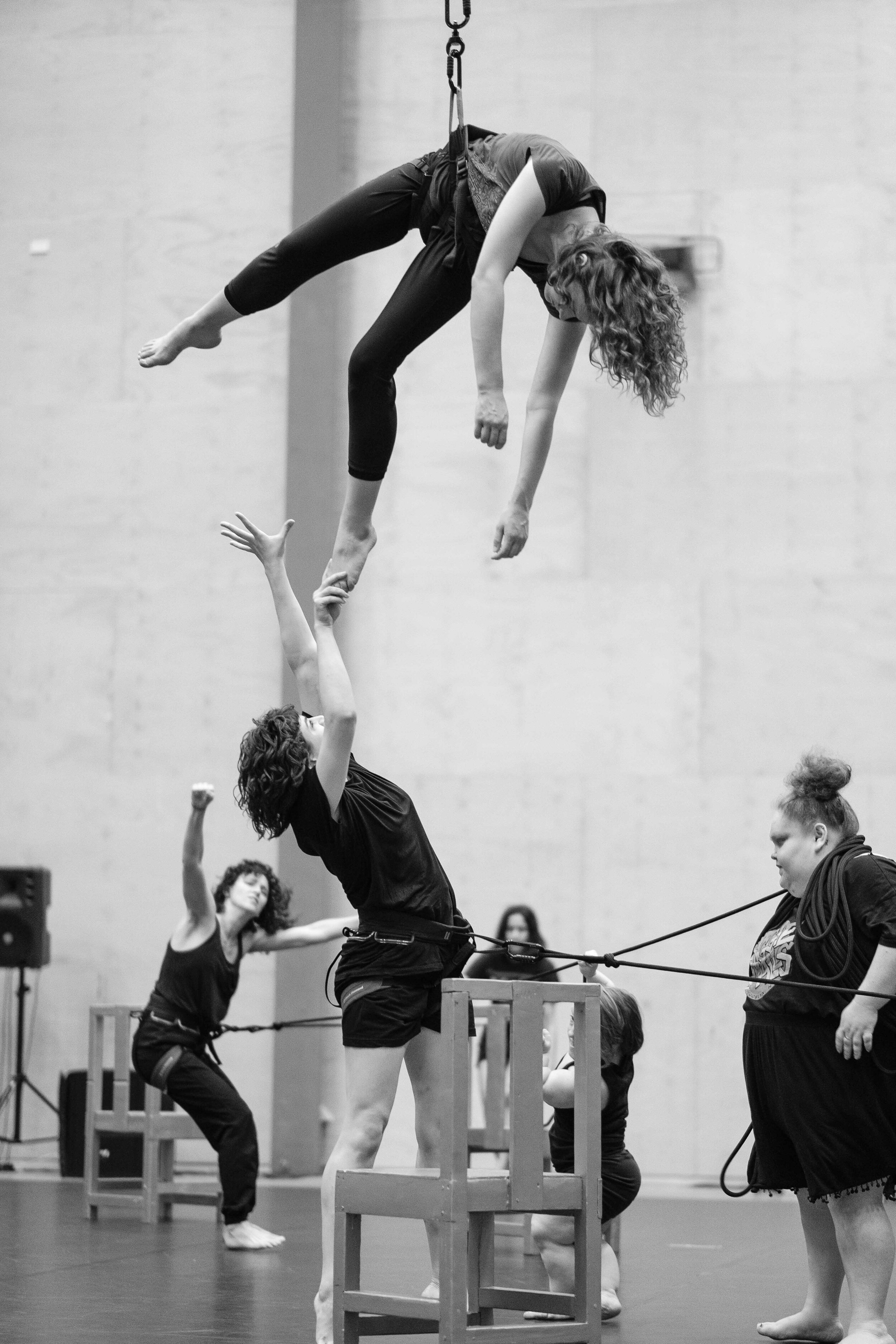
Script/Movement Workshop 2019
This development of GRLZ by Victoria Haralabidou was a weeklong exploration into the visual and physical language of the play. Supported by Playwriting Australia with Michelle Kotevski as our champion at The Red Box Space, with special thanks to Legs on the Wall.
Director Nell Ranney lead a collaboration with circus advisor Debra Batton and Deaf choreographer Anna Seymour; informing both the movement and Auslan dialogue.
Set and costume designer Isabel Hudson spurred conversations around how the visual world interacts with the movement and text.
Together, alongside a cast including Gabrielle Chan, Kate Cheel, Airlie Dodds, Emma Harvie, Emma J. Hawkins, Rebecca Massey, Anna Seymour and Megan Wilding; they worked to uncover this story about a group of institutionalised girls fighting to hold onto their voice.
(Extra special thanks to workshop assistant Sharni McDermott, and rigger David Jackson)
Photography by Clare Hawley.
Video by Matthew Maule.
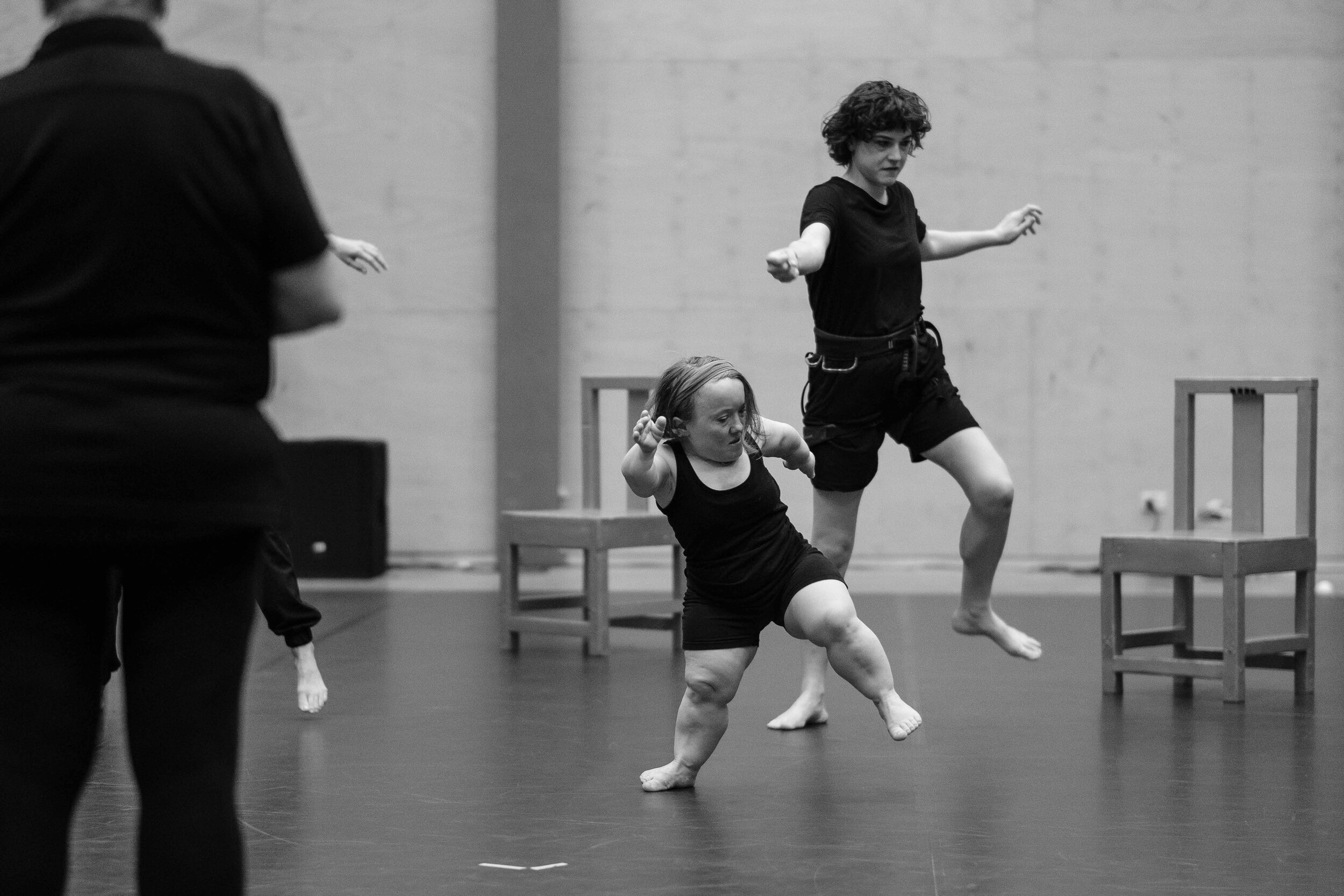
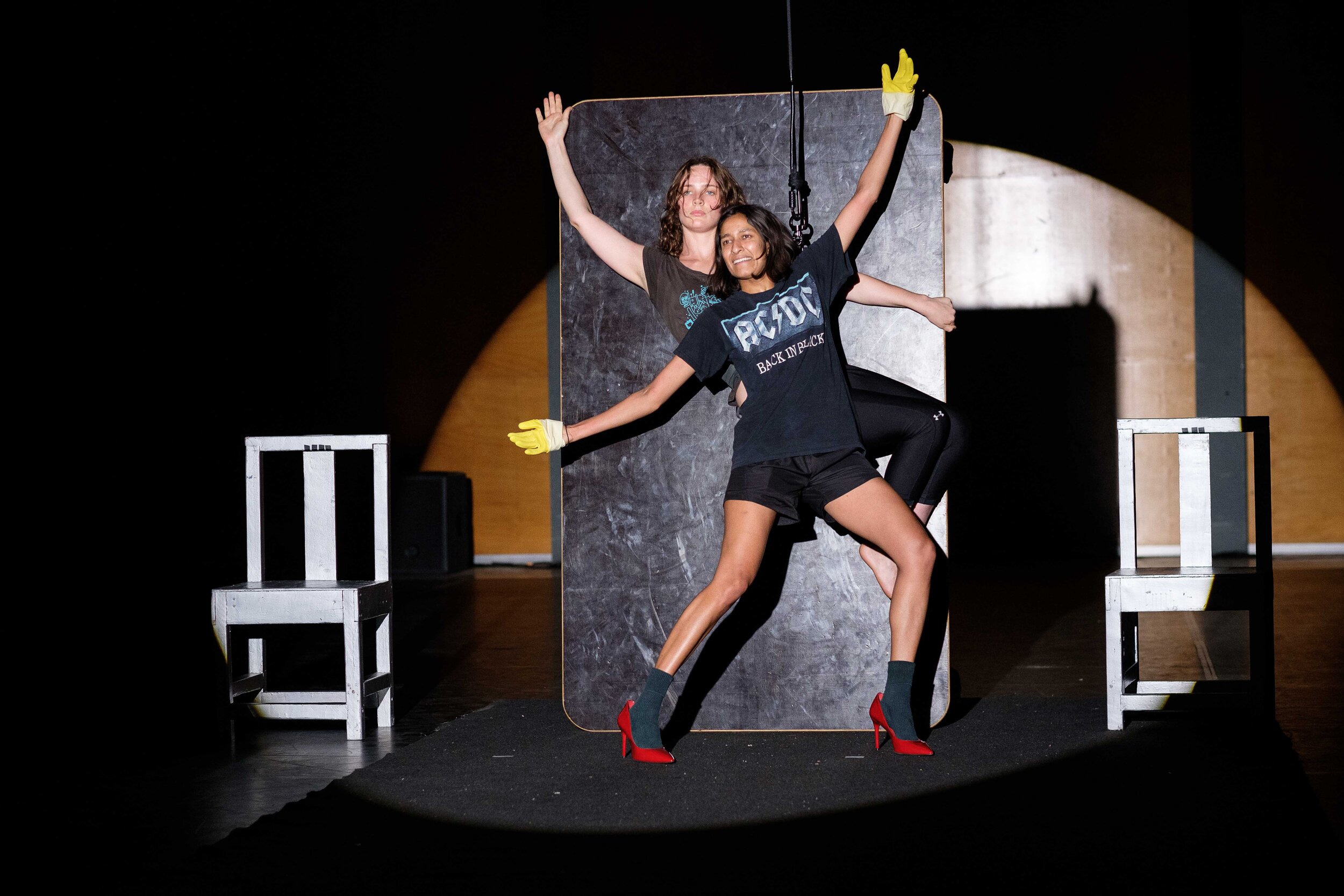
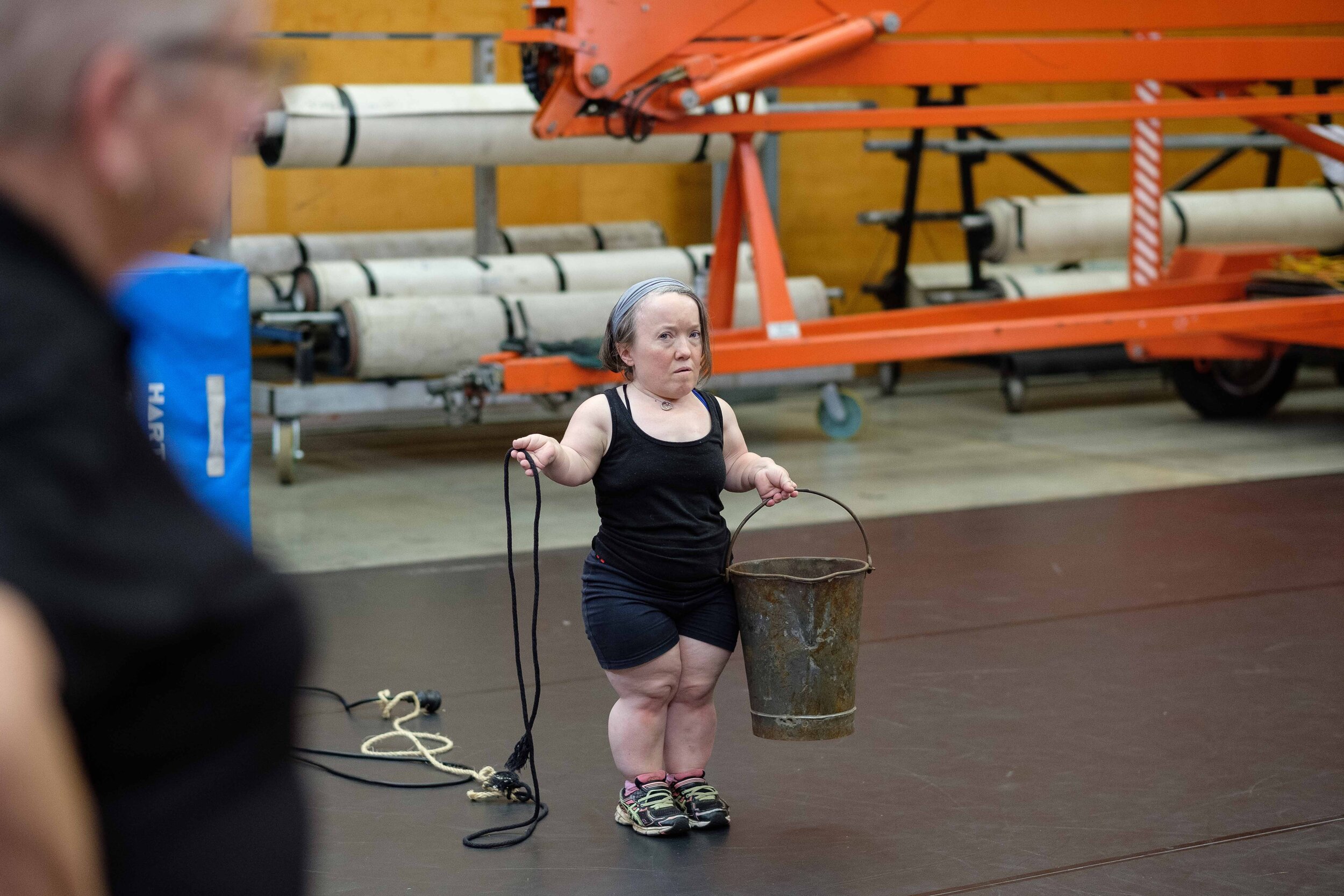
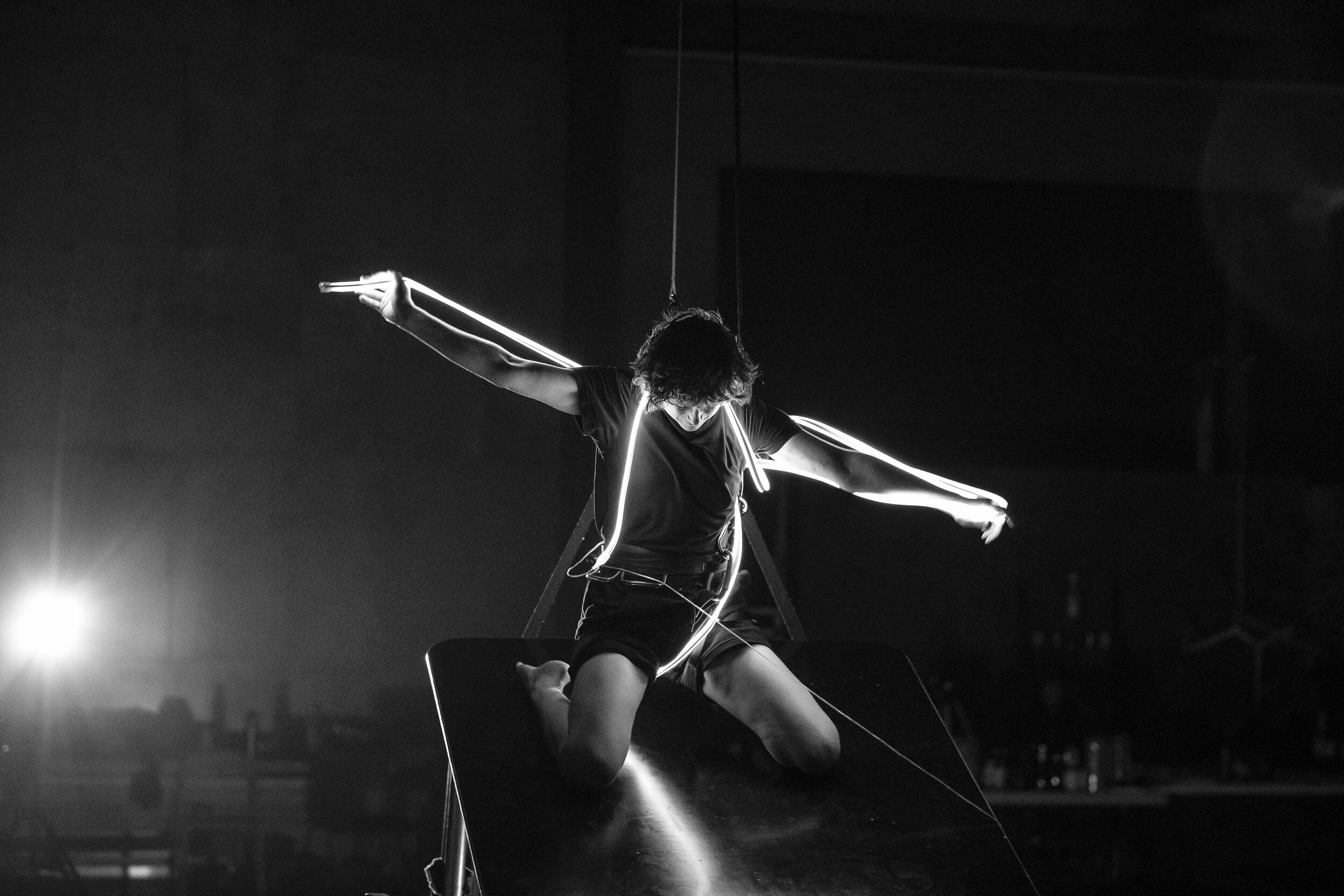
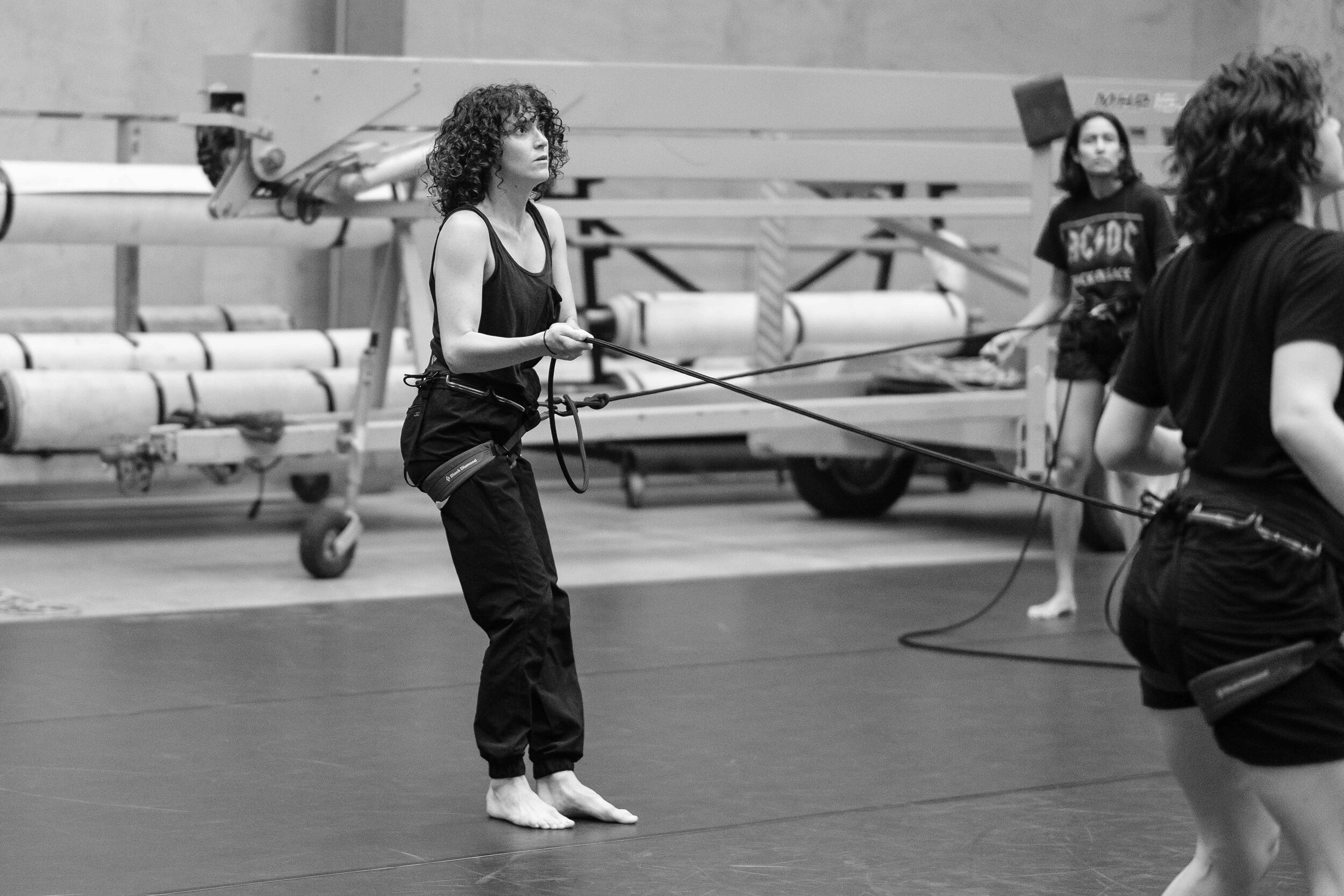
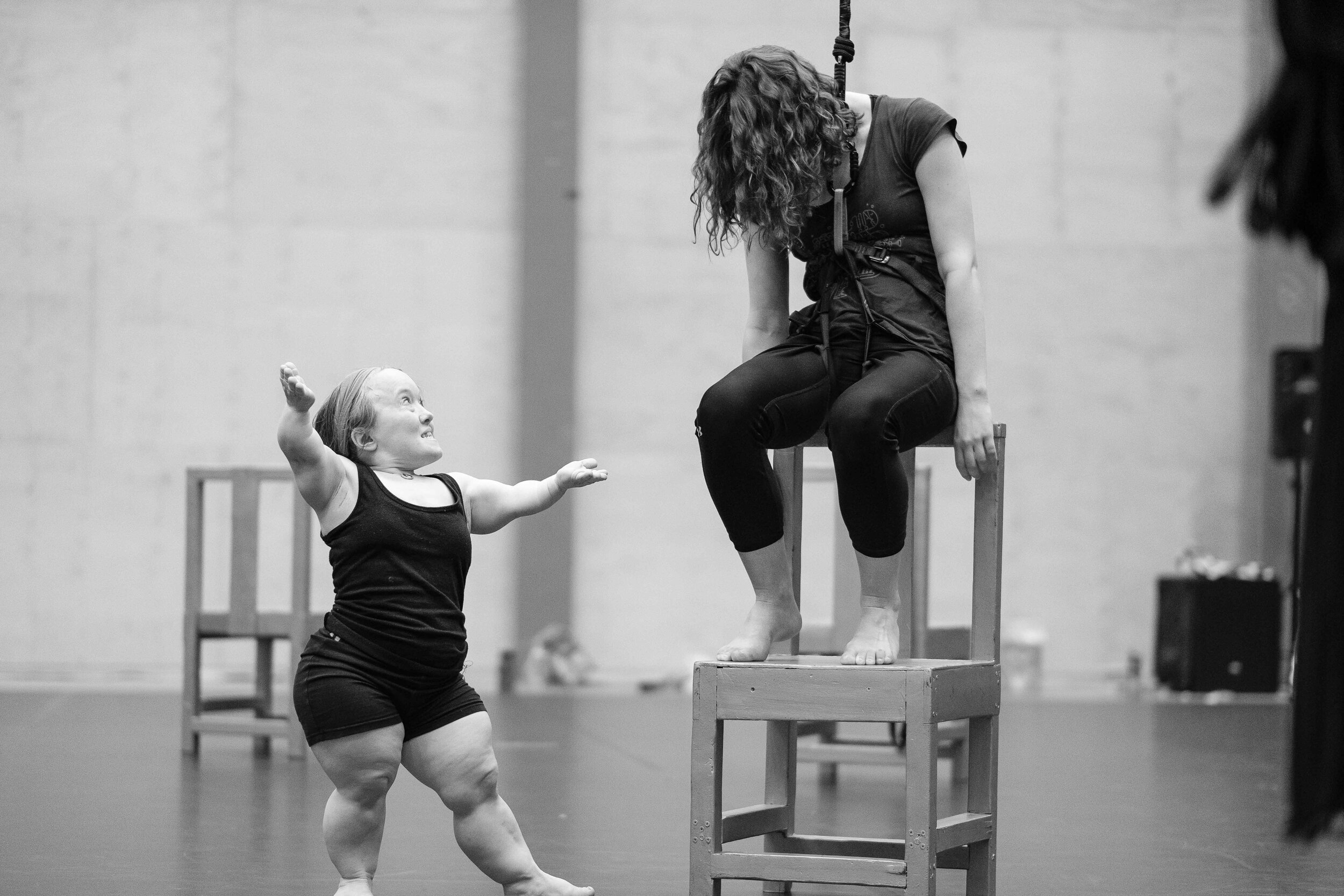
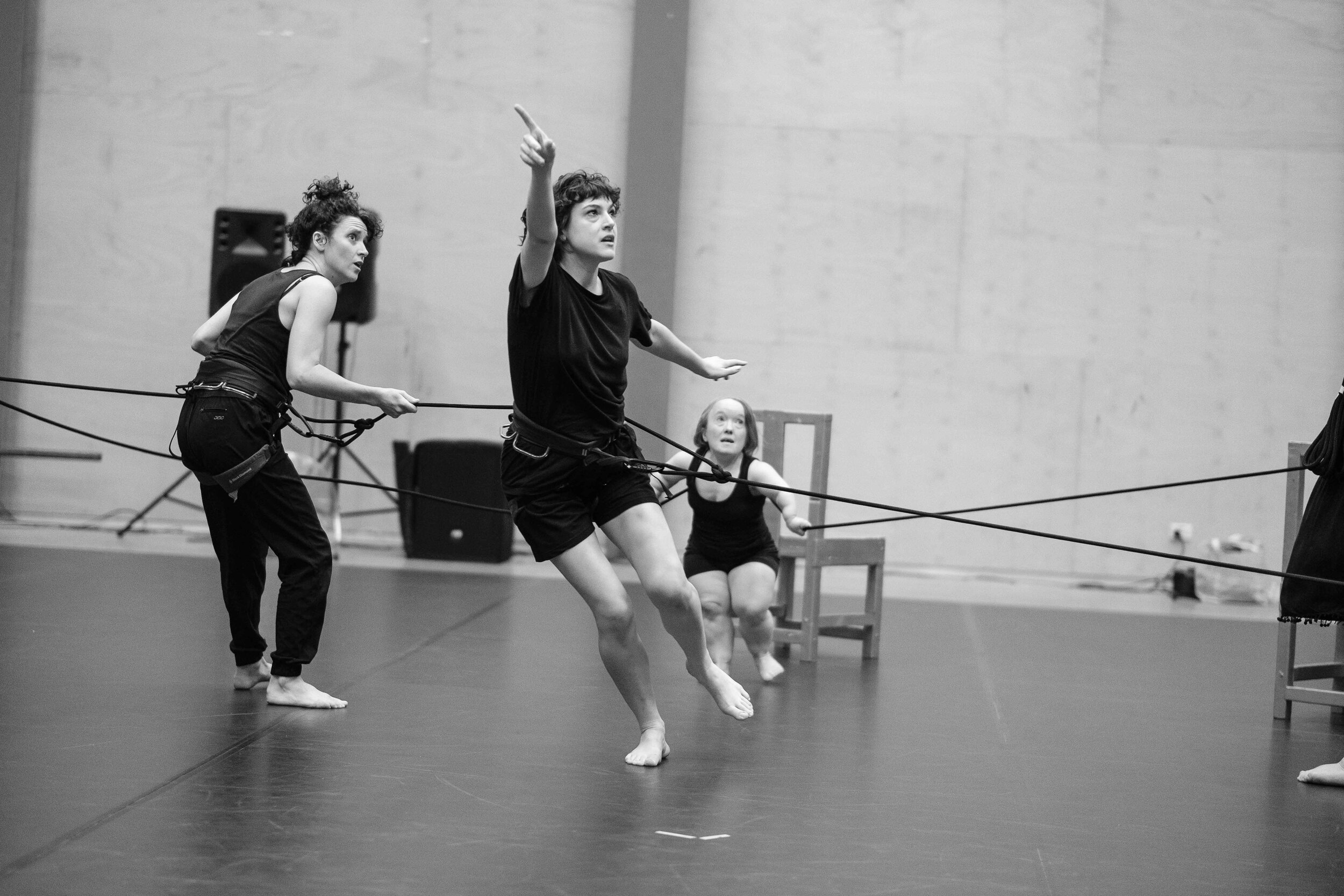
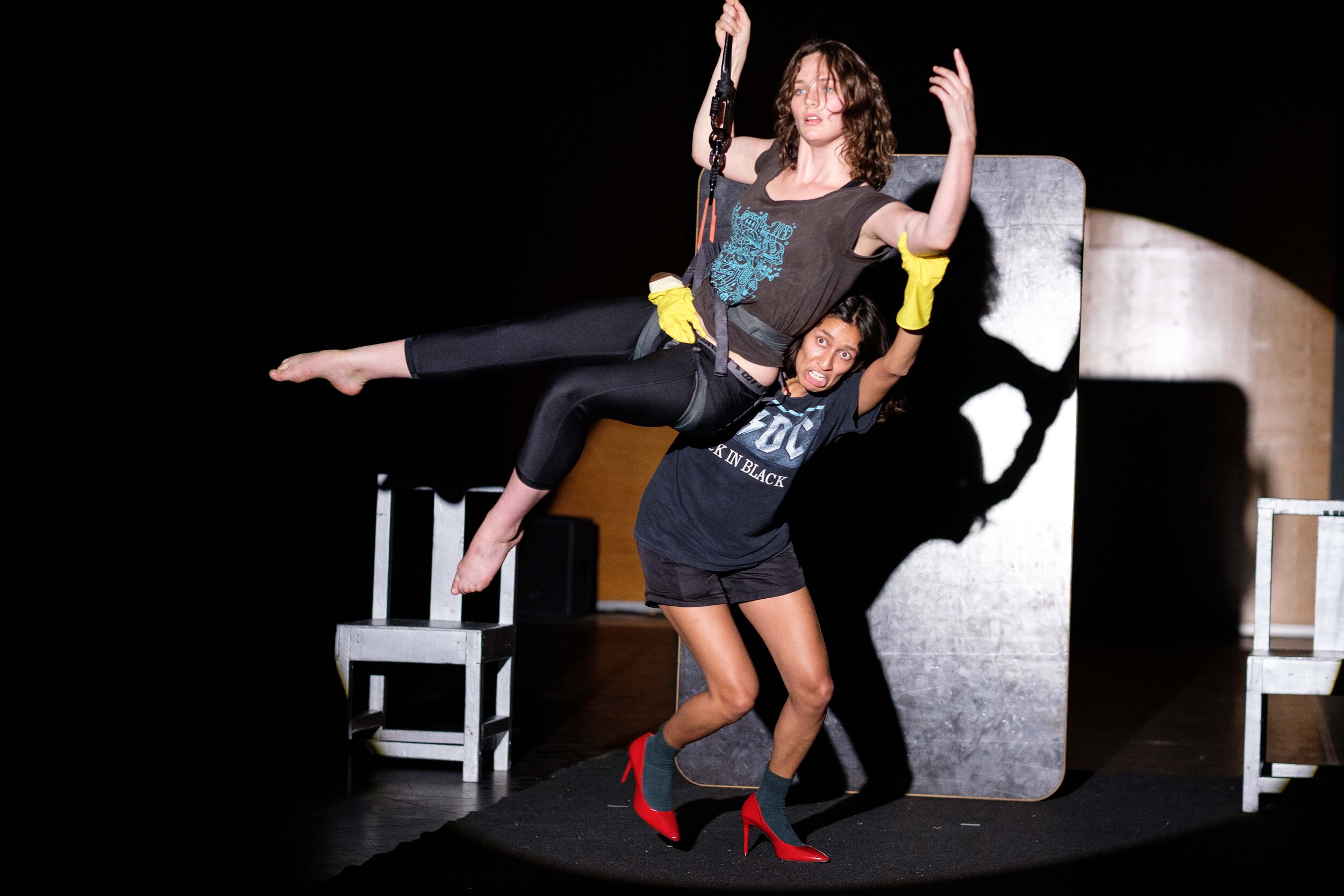

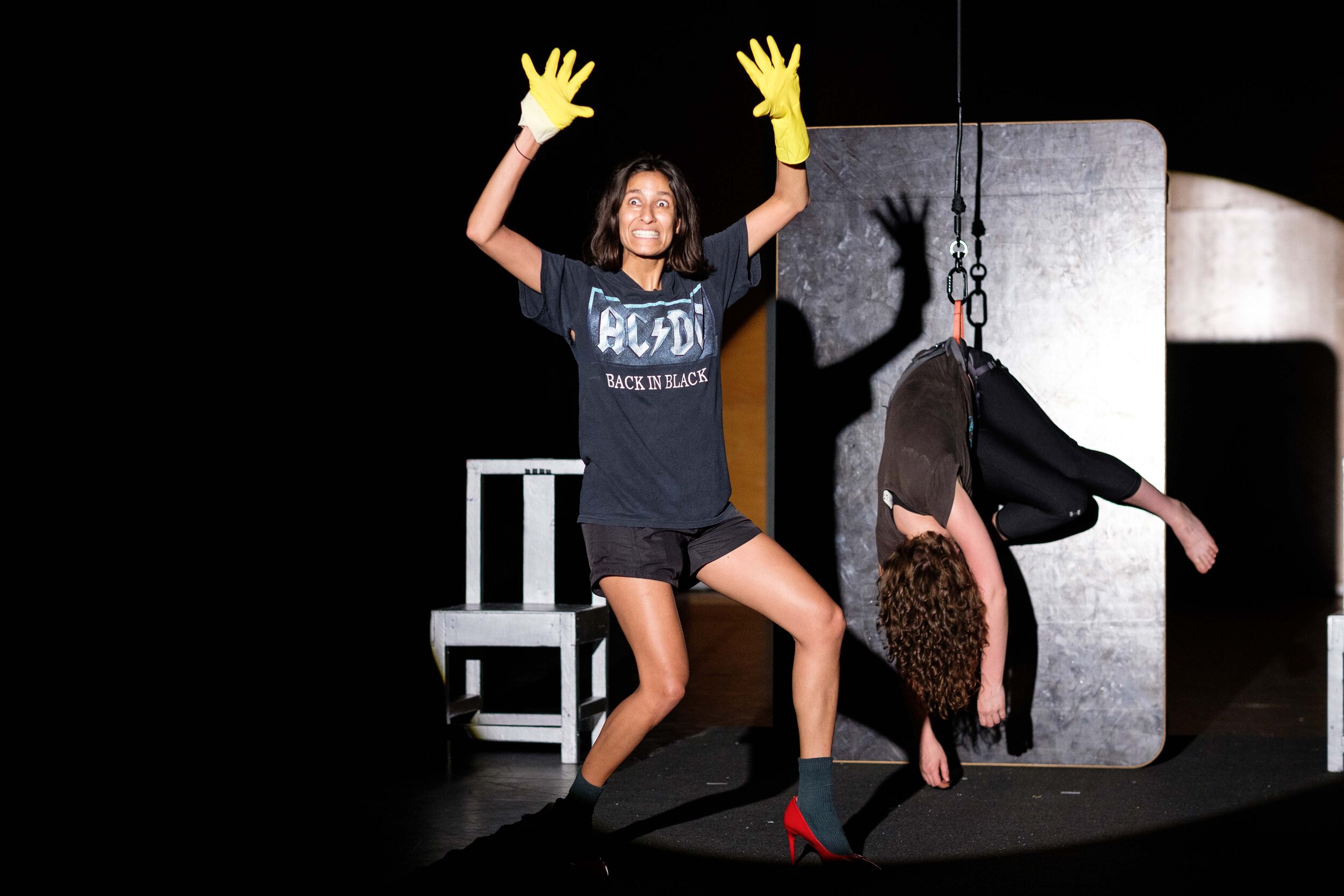
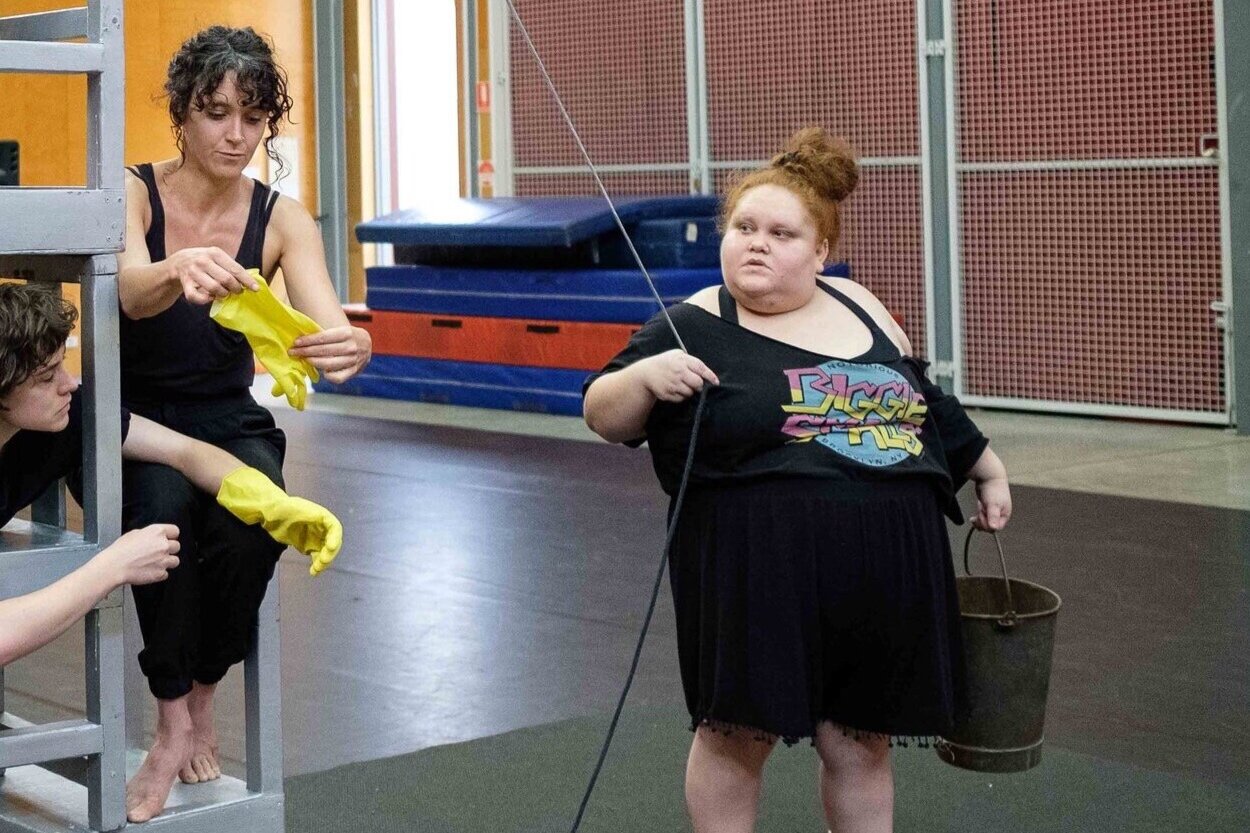
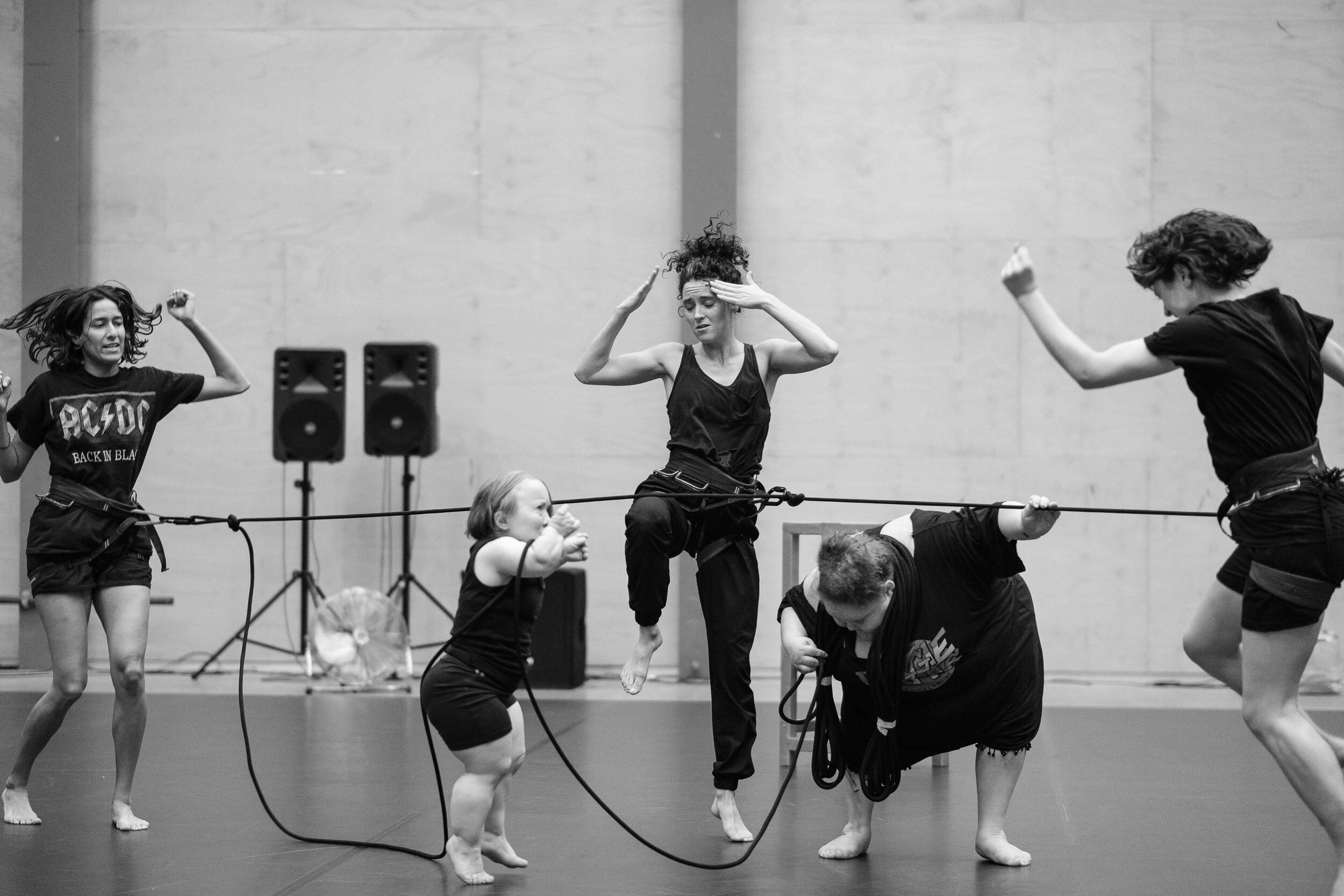
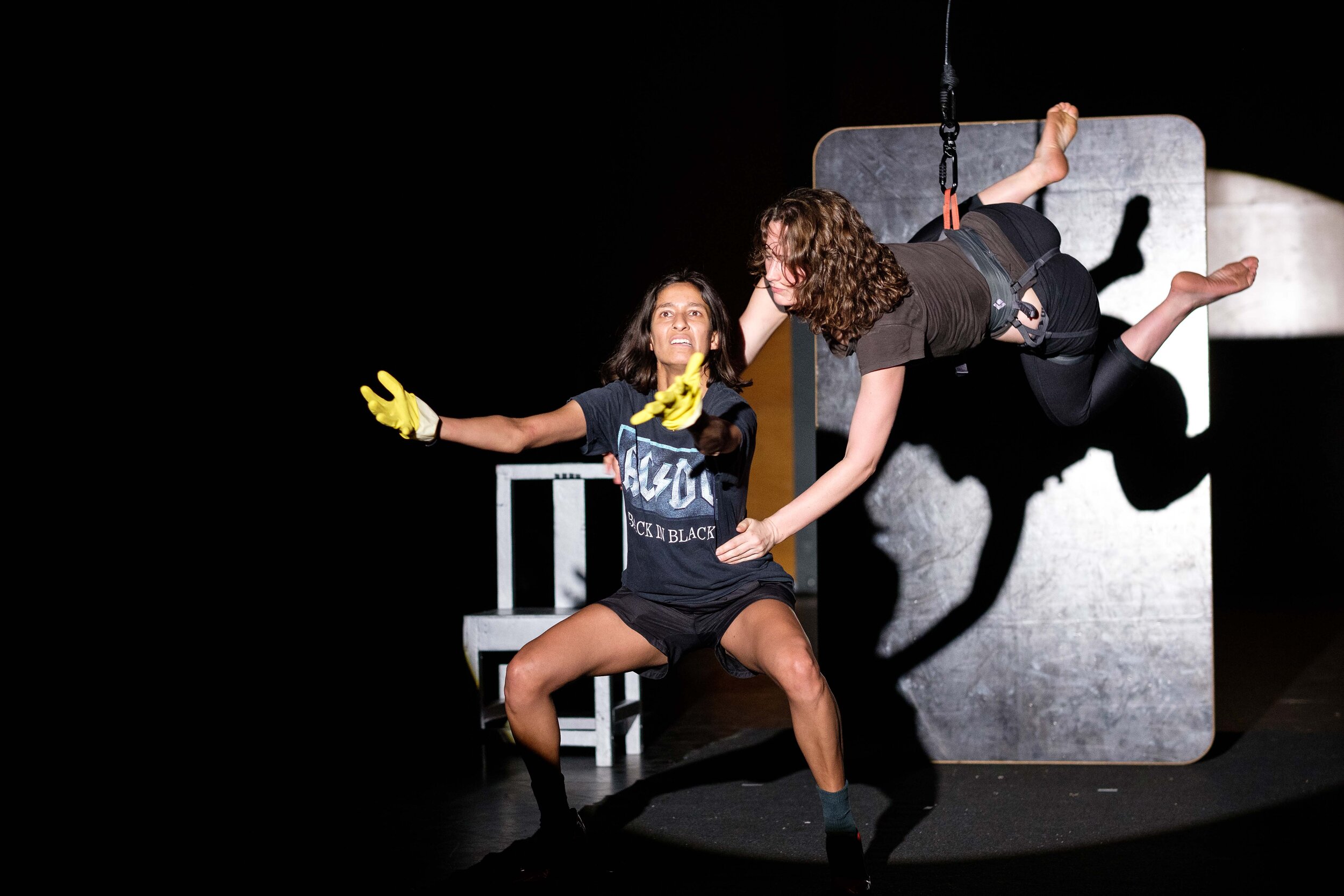
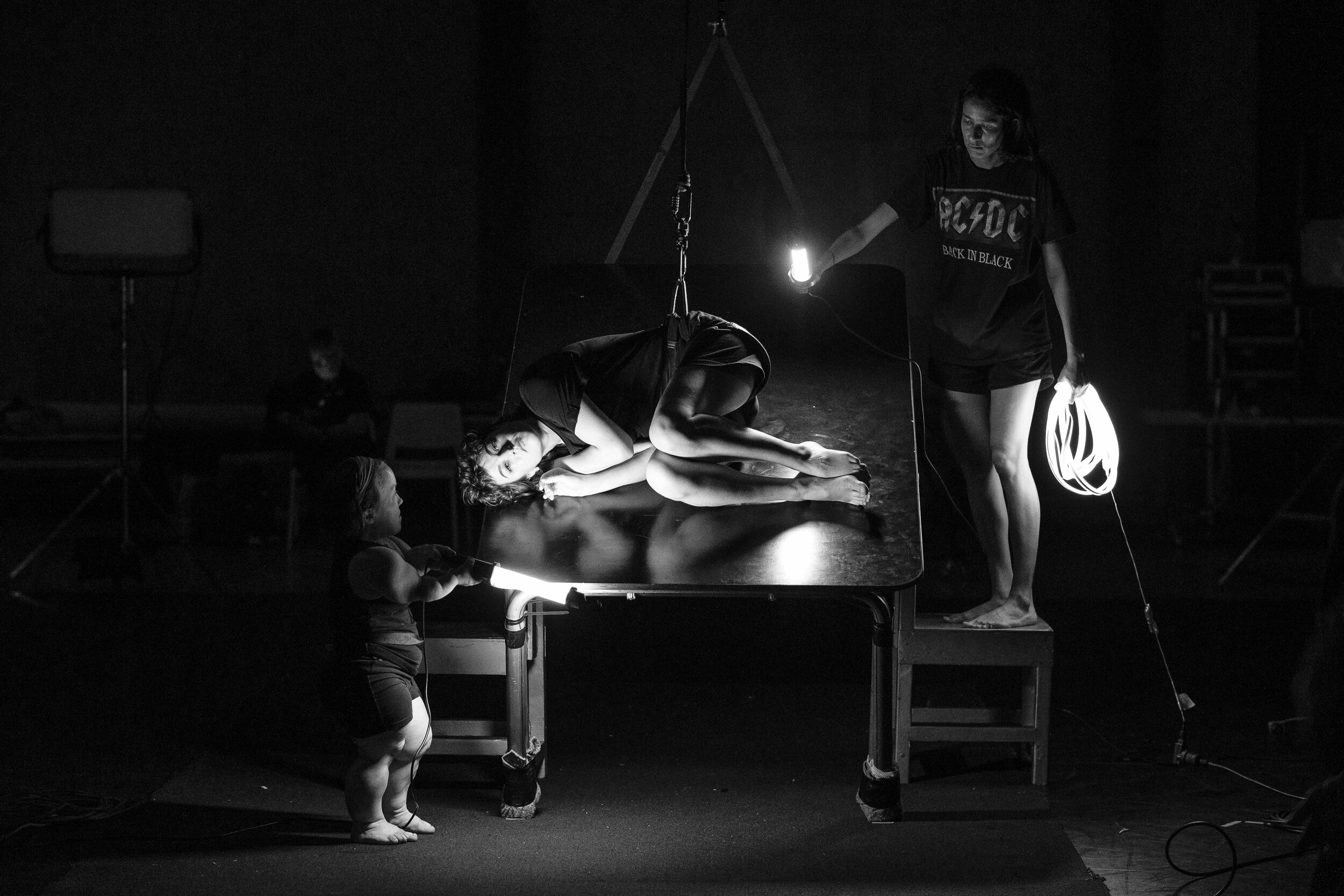
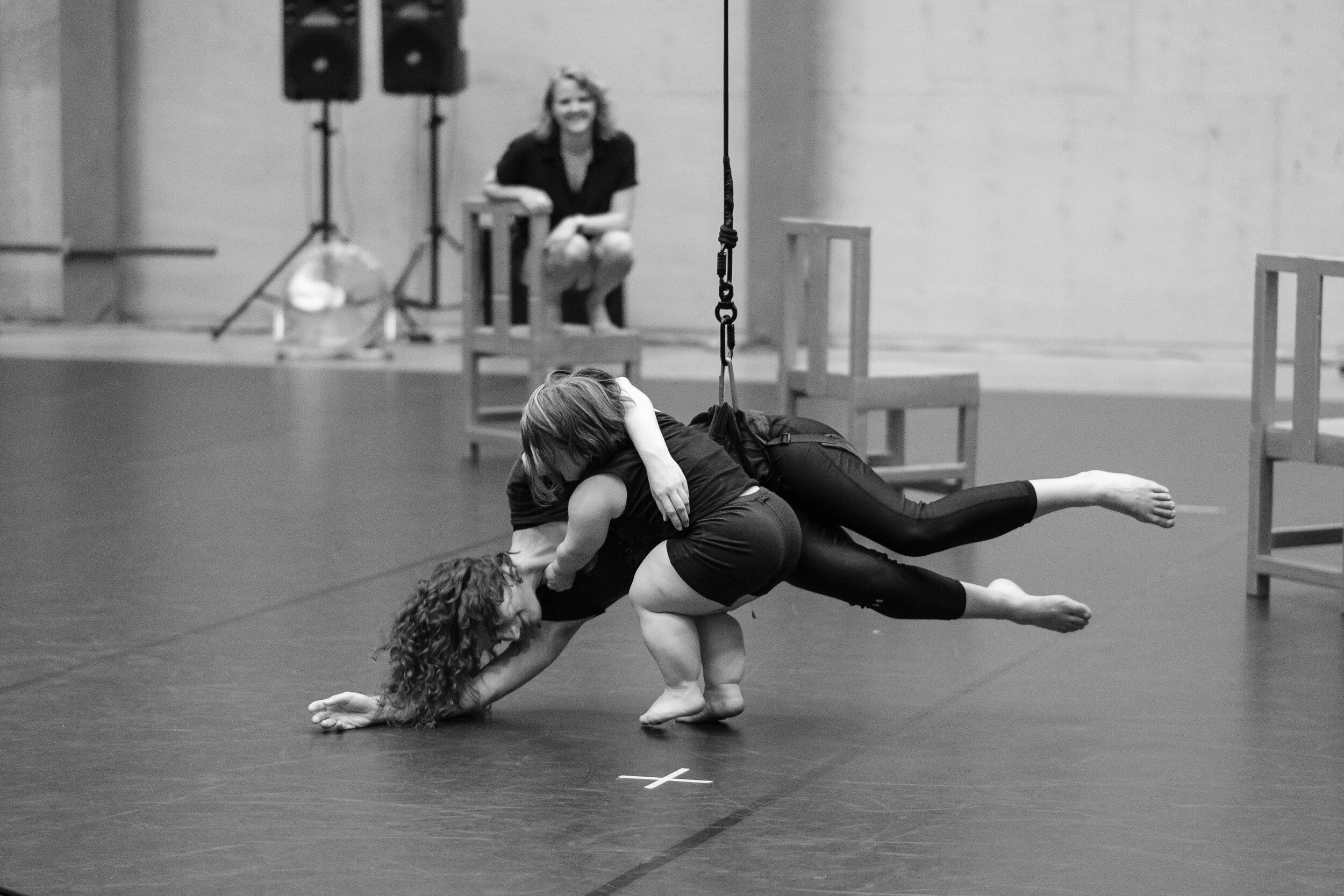
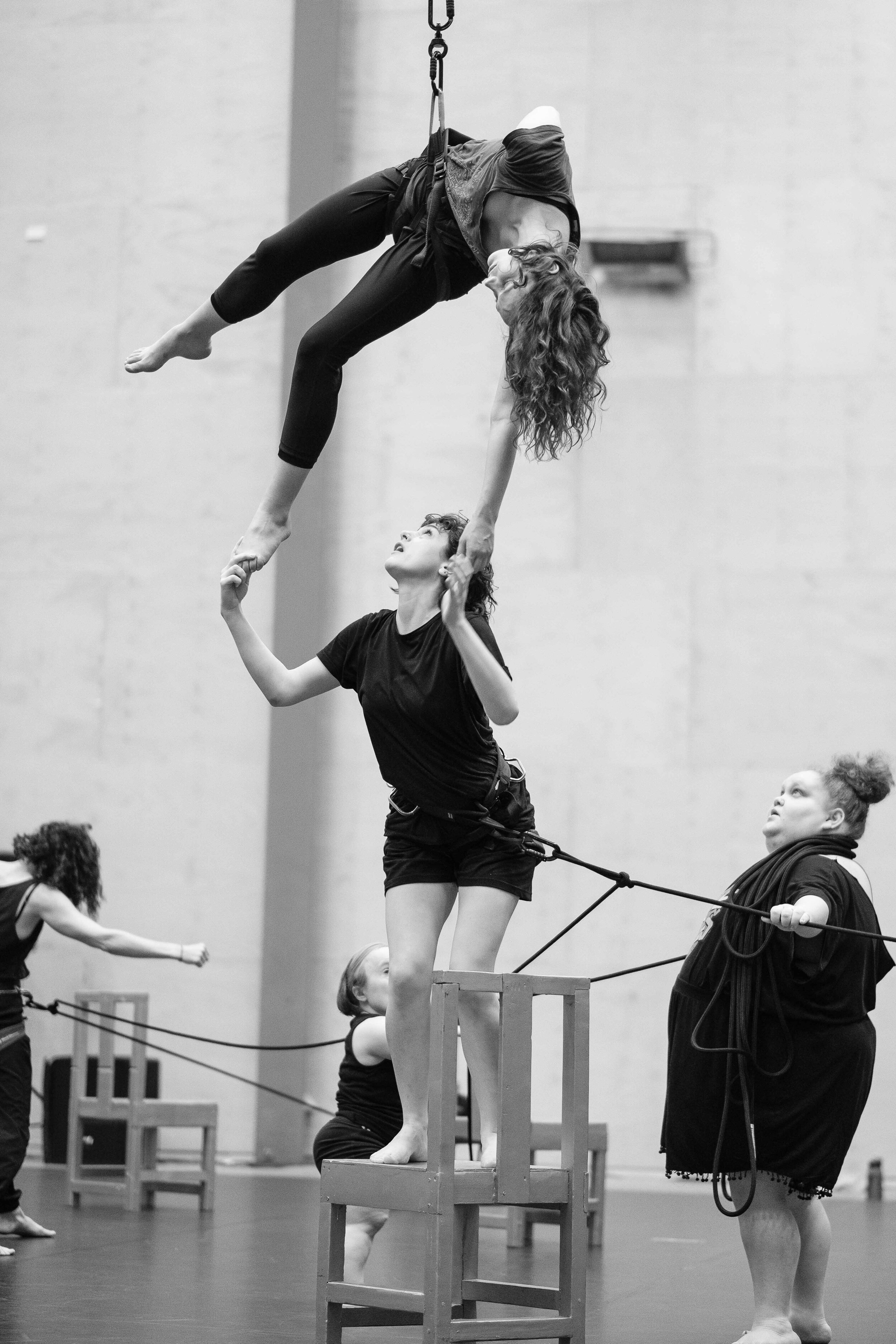
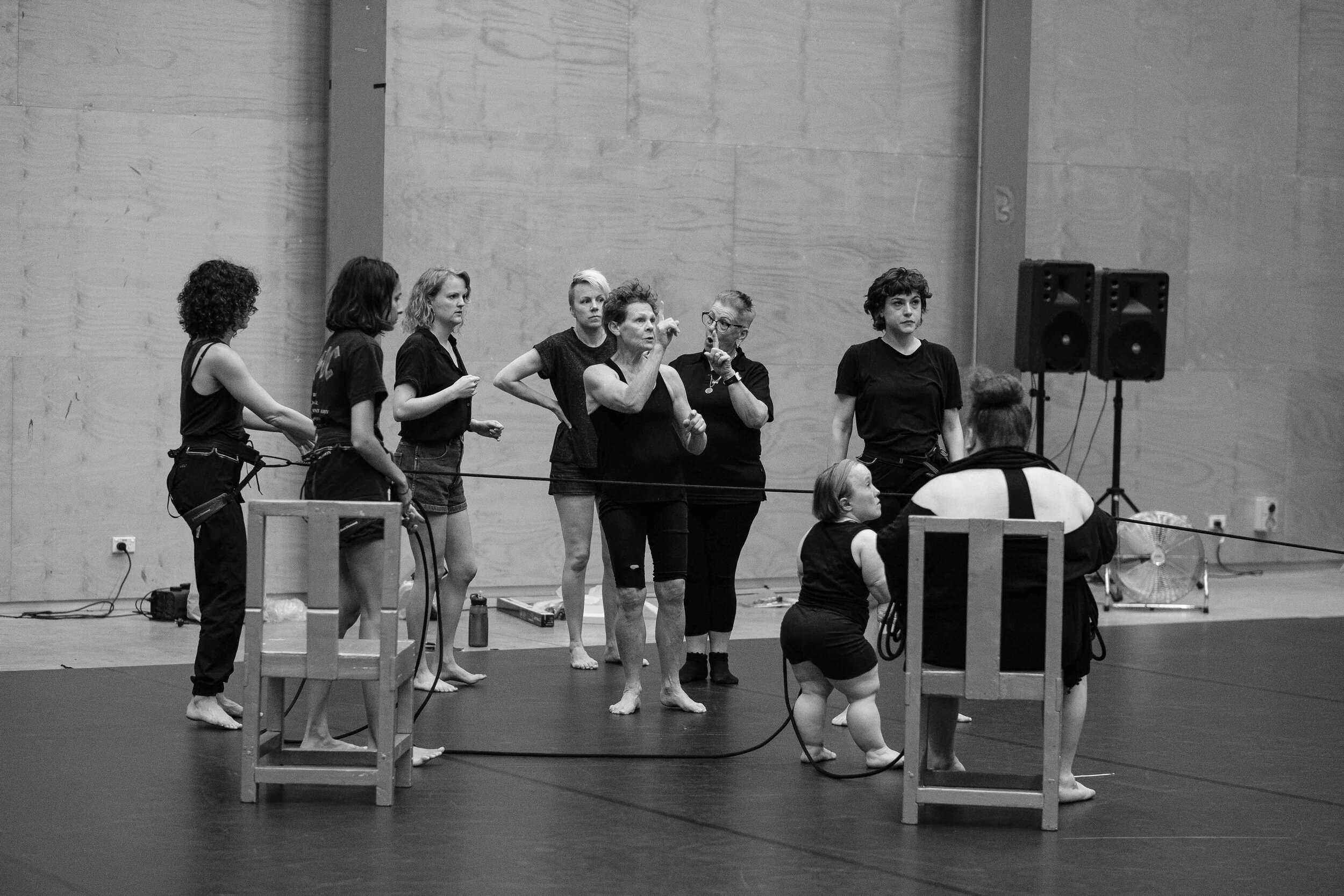
Discoveries and Exploration
GRLZ is a play brimming with references to physical movement and multiple modes of performance. From the performance of gender, the outward performance patriotism towards the West, to the performance of conformity through daily exercises, and the traditional performances of circus and ballet- both a way of survival and a dream of escape in Russia! This was our initial roadmap to exploring the physical languages embedded in the story.
With the advice of Debra Batton, former Legs on the Wall artistic director and respected elder of Australian circus, we explored the integration of certain apparatus into the action of the play.
Stacking chairs provide a foundation for the “tea ceremony” scene, a ritual where the girls create a tower inside their dorm, reaching a light bulb to create an electric circuit and boiling water for tea. Similarly, by using a traditional table sliding table which can be easily flipped on its side or vertically, a dorm bed transforms into a vertical gurney as used to theatricalise Blondie and Potty’s surgery as well as providing potential height and resistance for low hung harness work.
We explored three different types of rigging alongside the dramatic action. As an introduction, during the surgery scene, actors were harnessed into a dead hung system, mirroring the helplessness and lack of control within the situation. We also tried a three to one pulley system where one performer flies, while a group of 5 performers run across the floor as her anchor and must work together to collectively control her height and deliver her safely back down to the ground. This was a compelling image set alongside the girls discovering their agency, working together to find Blondie who is lost, along with her hope.
Finally, we explored using a counterweight rigging system, specifically for the character of Pigeon who knows magic. She performs a magic trick that can make one of the girls disappear during their performance for Western monitors. Debra Batton worked closely with trained dancer Anna Seymour as Pigeon, to create a physical sequence that embodied her agency through flight, and powers of appearance and disappearance.
Our collaboration with Anna Seymour was three-fold! As well as playing the role of Pigeon, Anna shared her choreographic skillset to lead the ensemble in devising the daily exercise routine. And while this physical vocabulary provided a foundation in discipline and conformity, we also explored its potential to be used for connection and rage and tenacity.
In addition to this, Anna worked with Victoria translating dialogue into Auslan for the role of Pigeon who is deaf. However because the play is an ensemble piece we quickly discovered how essential visual modes of communication became for the entire team, while working with Anna as a key collaborator.
This was one of the most impactful discoveries of the development- building an ensemble who could negotiate the drama by listening and connecting with each other primarily through eye contact.
Throughout all of this physical work, it is worth mentioning the deliberate choice to cast actors of varying physical skill- but who were all athletes of the heart! Observing an ensemble of vastly differing bodies and abilities, negotiate obstacles in a space together, was what served the story best.
Working in a combination of English and Auslan led to questions around the play’s accessibility for a deaf audiences. As part of our evaluation with Anna we discussed the integration of shadow interpreters into the action of the play. This is where Auslan interpreters are integrated into the staging, shadowing various characters for interpretation, but where their role may also plays into the action, dramaturgically.
GRLZ presents a perfect opportunity to dovetail the role of a shadow interpreter with the character of Mike. Mike was their former ringleader and taught Pigeon how to sign, but she is gone now. The Girls believe she went home, but Potty discovers the darker truth. Mike haunts daily conversations, as if she was a shadow..
We see an exciting opportunity for the future performance of GRLZ to include shadow interpreters, who function in the silent role of Mike but also provide translation for accessibility.